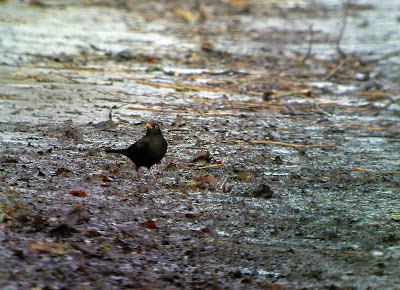You'll have noticed that more and more of our birds are now starting to sing in the mornings as the sun comes up and you may be wondering why this is happening when spring is a long way off.
Well, it's due to a physiological change that is taking place called photo periodic gonadal recrudescence. Yes, this is a difficult phrase to get your tongue around (and will probably make this blog drop right into your dodgy email folder) but with a little practise, it gets easier to say. So, what does it mean?
After the breeding season, a bird's main priority is to moult its feathers and lay down fat to survive the coming winter months. To facilitate this, the whole of the reproduction system shuts down which allows the bird to conserve energy and to channel essential nutrients towards making new feathers. Their sexual organs actually shrivel up! What triggers this is the waning day length and, for our resident birds, a change in diet as insects become more difficult to find and birds become more reliant on seeds and fruit.
 |
| a dunnock singing |
The days start to lengthen again after December 21st and the sexual organs begin to regrow - this is photo periodic gonadal recrudescence (sexual organs regrowing when hormones are stimulated as a result of increasing day length). One by one, each species will begin to sing in the mornings. Wrens and dunnocks start to sing by late December or early January and many of us will hear their first blackbird singing before the month ends. Chaffinches begin singing later, usually in February or March.
So I can hear you saying "what about robins? I've heard robins singing all through the winter". Well robins hold a winter territory and defend it all the way through the winter months. Both the male and female robin will sing and you may even see some aggressive behaviour in your garden if another robin comes close.
The robin you see in your garden during the winter is likely not to be the one that was occupying territory there during the spring and summer. Most birds move, even if it is just a few yards, which allows birds migrating from the continent to find winter feeding grounds.
Your homework for this week is to listen out for as many different songs as you can each morning from now on. Don't worry if you can't identify the species by their song, just pick out the different ones and see if you can hear more than one bird with the same song. How many are the same - how many are different? If you do that each day, you'll soon recognise each song and over the coming weeks, you'll hear when a new species starts to sing. You can get help with your bird songs by looking at the following links. Enjoy!
Distinguishing song and mistle thrush - British Trust for Ornithology
BBC guide to birdsong
RSPB guide to birds
British garden bird tutorial
If you'd like more help then why not join one of my classes - contact me for details of indoor and outdoor tuition.



